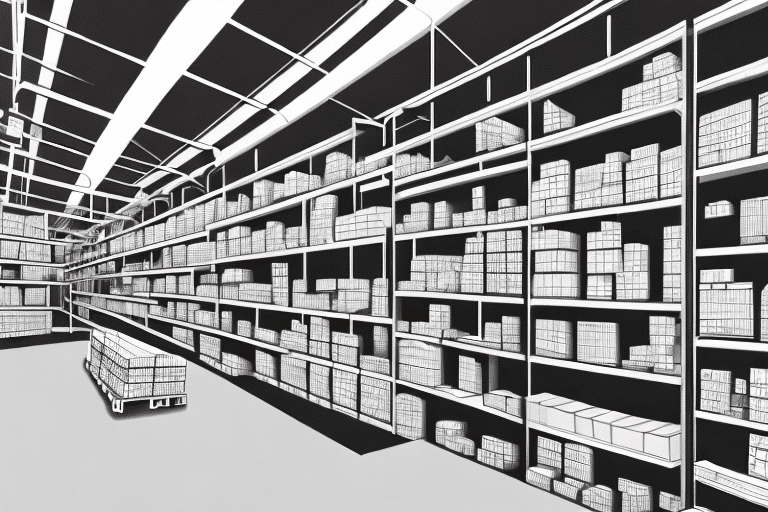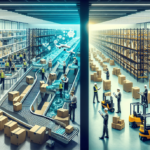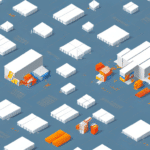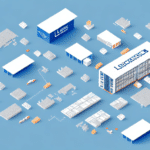What are Dark Stores and How Do They Work?
Dark stores, also known as fulfillment centers, are physical retail spaces that function more like warehouses than traditional storefronts. Unlike conventional stores where customers browse aisles and select products off shelves, dark stores are dedicated solely to processing online orders. Typically located in urban areas, these facilities are stocked with a wide range of products that are frequently ordered online. Dark stores are equipped with the necessary infrastructure to efficiently fulfill orders, such as conveyor belts, packaging supplies, and advanced logistics software.
One of the main advantages of dark stores is their ability to offer faster delivery times. Since these stores focus exclusively on fulfilling online orders, they can process and ship orders more quickly than traditional stores that also serve in-store customers. This efficiency is crucial for retailers offering same-day or next-day delivery options, which have become increasingly important in the competitive e-commerce market.
Another benefit of dark stores is their capacity to optimize inventory management. By analyzing online sales data, retailers can stock dark stores with products that are most frequently purchased online, reducing the need for excess inventory and minimizing waste. This approach also allows retailers to expand their online product offerings without being constrained by the limited physical shelf space of traditional stores.
The Rise of Dark Stores in the Retail Industry
The exponential growth of e-commerce has been a key driver behind the emergence of dark stores in the retail sector. As more consumers shift to online shopping, retailers must find innovative ways to meet increasing demand. Dark stores provide a viable solution by allowing retailers to streamline operations and fulfill orders more efficiently than traditional retail settings. By dedicating spaces exclusively to online orders, retailers can reduce shipping times and offer faster delivery, enhancing their competitiveness in the e-commerce landscape.
Additionally, dark stores can be established in areas with lower rent and operating costs, as they do not require the same level of customer-facing amenities as traditional stores. This can result in significant cost savings for retailers, which may be passed on to customers through lower prices or free shipping offers. According to a [report by CBRE](https://www.cbre.com/research-and-reports), the demand for fulfillment center space, including dark stores, has surged in recent years due to the e-commerce boom.
However, there are potential drawbacks to adopting dark stores. They may not provide the same customer experience as traditional stores, as customers cannot physically interact with products before purchasing. Furthermore, the shift towards e-commerce and dark stores may lead to job losses in traditional retail roles, such as sales associates and cashiers.
How Dark Stores Help Retailers Meet Growing Demand for Online Shopping
One of the most significant challenges facing brick-and-mortar retailers today is the need to meet the growing demand for online shopping. Dark stores bridge the gap between traditional retail and e-commerce, allowing retailers to offer the convenience of online shopping while maintaining a physical presence. By utilizing dark stores to process online orders, retailers can provide faster delivery, reduce shipping costs, and enhance the overall customer experience. This strategy enables retailers to stay competitive in an increasingly crowded and fast-paced market.
Moreover, dark stores serve as testing grounds for new products and services without disrupting the in-store experience. Retailers can experiment with different product offerings, pricing strategies, and marketing campaigns within dark stores, leveraging the data collected to make informed decisions about their physical store offerings. This adaptive approach helps retailers stay ahead of market trends and changing consumer preferences.
In addition, dark stores facilitate efficient handling of returns and exchanges. By centralizing these processes, retailers can offer a more convenient and streamlined experience for customers, while minimizing the impact on physical retail operations. This efficiency not only saves time and resources but also boosts customer satisfaction and loyalty.
The Cost Savings of Dark Stores Compared to Traditional Retail Spaces
Cost efficiency is one of the key benefits of dark stores. Traditional retail spaces entail high overhead costs, including rent, utilities, and employee salaries. In contrast, dark stores require fewer staff members and can be situated in less expensive areas, thereby reducing operational expenses. Additionally, the limited selection of products in dark stores streamlines inventory management, further cutting costs associated with stock handling and storage.
Dark stores also enhance the efficiency of the picking and packing process. In conventional retail environments, employees must navigate through aisles and shelves to locate and retrieve products for online orders, a process that can be time-consuming and prone to errors. Dark stores, however, organize products specifically for online order fulfillment, making the picking and packing process faster and more accurate. This optimization not only saves time but also improves customer satisfaction by reducing order errors.
Improving Efficiency in Inventory Management with Dark Stores
Effective inventory management is critical for any retail business, and dark stores contribute significantly to streamlining this process. By dedicating specific spaces for online orders, retailers can more accurately track inventory levels, reducing the likelihood of stock shortages or overstocking. This precision leads to better supply chain optimization, ensuring that the right products are available in the right quantities and at the right time.
Furthermore, dark stores enable retailers to lower operational costs. With separate facilities dedicated to online orders, expenses related to rent, utilities, and staffing can be minimized. This cost-effectiveness is particularly advantageous for retailers aiming to expand their online presence without incurring significant overhead costs.
Additionally, dark stores enhance the overall customer experience by ensuring timely and accurate order fulfillment. By maintaining dedicated facilities for online orders, retailers can provide consistent service to their online customers, fostering increased customer satisfaction and loyalty. This, in turn, drives higher sales and revenue growth.
Offering Faster Delivery with Dark Stores and Reduced Shipping Times
A major advantage of dark stores is their ability to offer faster delivery times. By strategically locating dark stores closer to customer populations, retailers can significantly reduce shipping times, enabling them to provide same-day or next-day delivery options. According to a [study by Deloitte](https://www2.deloitte.com/us/en/pages/operations/articles/fulfillment-center-compare-costs-delivery-options.html), faster delivery times are a critical factor influencing consumers' online purchasing decisions.
Reducing shipping times not only enhances customer satisfaction but also decreases shipping costs, contributing to improved profitability for retailers. By optimizing their logistics through dark stores, retailers can offer competitive delivery options while maintaining cost-efficiency.
Enhancing the Customer Experience with Curbside Pickup from Dark Stores
In addition to faster delivery, dark stores provide retailers with the capability to offer curbside pickup. This option allows customers to place orders online and then collect their items directly from the dark store without entering a traditional retail space. Curbside pickup caters to customers who value convenience, prefer minimal contact interactions, or require immediate access to their purchases.
Curbside pickup enhances the overall customer experience by combining the benefits of online shopping with the immediacy of in-person collection. This service option can lead to increased customer satisfaction and loyalty, as it provides a flexible and efficient shopping solution.
Leveraging Data Analytics to Optimize Operations in Dark Stores
Data analytics play an essential role in optimizing dark store operations. By analyzing customer data and sales trends, retailers can make informed decisions regarding inventory management, staffing, and shipping logistics. For instance, data-driven insights can help retailers predict peak ordering times, adjust staffing levels accordingly, and ensure that high-demand products are adequately stocked.
Moreover, data analytics can identify patterns in customer preferences, enabling retailers to tailor their product offerings and marketing strategies. This targeted approach not only improves operational efficiency but also enhances the customer experience by aligning offerings with consumer demand.
Implementing advanced data analytics tools allows retailers to continuously monitor and refine dark store operations, leading to sustained improvements in efficiency, cost reduction, and customer satisfaction.
Overcoming Challenges in Implementing a Dark Store Strategy for Retailers
Despite the numerous benefits of dark stores, retailers may encounter several challenges when implementing this strategy. One significant hurdle is the initial investment required for infrastructure and technology to establish and operate dark stores effectively. Retailers must invest in warehouse management systems, automated picking technologies, and other logistical tools to ensure operational efficiency.
Developing new processes for inventory management and order fulfillment is another challenge. Retailers need to adapt their workflows to accommodate the unique demands of dark store operations, which may involve reconfiguring existing logistics practices and training staff accordingly.
Additionally, selecting optimal locations for dark stores is critical. Retailers must consider factors such as proximity to customer bases, transportation networks, and real estate costs to maximize the benefits of reduced shipping times and operational expenses. Conducting thorough market research and location analysis is essential to the successful implementation of dark stores.
Future Trends and Growth Opportunities for Dark Stores in the Retail Industry
The future of dark stores in the retail industry appears promising, driven by the ongoing expansion of e-commerce and evolving consumer preferences. As online shopping continues to grow, dark stores will play an increasingly vital role in the retail ecosystem, helping retailers scale operations and meet rising demand.
Technological advancements, such as automation and artificial intelligence, are expected to further enhance the capabilities of dark stores. These technologies can improve inventory accuracy, streamline order fulfillment processes, and reduce operational costs, making dark stores even more efficient and scalable.
Furthermore, we can anticipate greater integration between dark stores and other retail strategies, such as omnichannel retailing and last-mile delivery innovations. This integration will enable retailers to offer more cohesive and seamless shopping experiences, blending the strengths of both online and physical retail channels.
Overall, dark stores represent a significant growth opportunity for retailers seeking to optimize their operations, reduce costs, and enhance customer satisfaction in a rapidly evolving marketplace.
Case Studies: Successful Implementation of Dark Store Models by Leading Retailers
Several prominent retailers have successfully adopted dark store models, demonstrating their effectiveness in enhancing operational efficiency and customer satisfaction. For instance, Walmart has established multiple dark stores to fulfill online orders, enabling the company to reduce shipping times and improve the customer experience. According to Walmart’s [press releases](https://corporate.walmart.com/newsroom), these dark stores have significantly contributed to the company's e-commerce growth.
Instacart, a leading grocery delivery service, also operates dark stores known as "Micro-Fulfillment Centers." These centers utilize advanced automation and robotics to streamline the picking and packing process, allowing Instacart to fulfill orders rapidly and accurately. As reported by [TechCrunch](https://techcrunch.com/), Instacart’s dark stores have enabled the company to scale its operations efficiently in response to increased demand.
These case studies highlight the potential for dark stores to drive success across various retail sectors, showcasing their adaptability and effectiveness in meeting the challenges of the modern retail landscape.
Comparing the Pros and Cons of Different Types of Dark Store Models
Dark stores come in various models, each with its own set of advantages and disadvantages. Understanding these different models is essential for retailers to determine the best fit for their business needs.
Dedicated Dark Stores
Dedicated dark stores are purpose-built facilities designed exclusively for fulfilling online orders. These stores typically feature optimized layouts for efficient picking and packing, advanced automation systems, and specialized inventory management solutions.
- Pros: High efficiency, scalable operations, and seamless integration of advanced technologies.
- Cons: Significant initial investment and potential underutilization if demand fluctuates.
Conversion of Existing Retail Spaces
Another model involves converting existing retail stores into dark stores. This approach leverages existing real estate and infrastructure, allowing retailers to repurpose their physical locations for online order fulfillment.
- Pros: Lower conversion costs, short implementation time, and utilization of established locations.
- Cons: Limited optimization for fulfillment tasks and potential disruption to existing store operations.
Hybrid Models
Hybrid models combine elements of dedicated dark stores and converted retail spaces. Retailers may maintain some brick-and-mortar presence while also operating dark store facilities to balance both in-store and online order fulfillment.
- Pros: Flexibility to cater to both online and offline customers, diversified operational strategies.
- Cons: Complexity in managing dual operations and potential higher overall costs.
By evaluating the pros and cons of each model, retailers can choose the dark store approach that best aligns with their strategic objectives and operational capabilities.
Strategies for Integrating Brick-and-Mortar and Online Retail Channels through Dark Stores
Dark stores offer a unique opportunity for retailers to seamlessly integrate their brick-and-mortar and online retail channels, creating a unified and cohesive customer experience. Here are some strategies to achieve this integration:
Omnichannel Fulfillment
Integrating dark stores into an omnichannel fulfillment strategy allows retailers to efficiently manage inventory and fulfill orders across both online and in-store channels. This approach ensures that customers receive consistent service levels regardless of the shopping method they choose.
In-Store Pickup and Returns
Retailers can leverage dark stores to facilitate in-store pickup and returns for online orders. By centralizing these functions at dark store locations, retailers can streamline the process, making it more convenient for customers and reducing the burden on traditional store operations.
Integrated Inventory Systems
Implementing integrated inventory management systems that connect dark stores with physical retail locations ensures real-time visibility of stock levels. This integration helps prevent stockouts and overstocking, enhancing overall inventory efficiency.
Personalized Marketing and Promotions
Utilizing data from both online and offline channels, retailers can develop personalized marketing campaigns and promotions. This targeted approach can enhance customer engagement and drive sales by addressing the specific preferences and behaviors of individual customers.
By employing these strategies, retailers can create a seamless and integrated retail ecosystem that leverages the strengths of both brick-and-mortar and online channels, utilizing dark stores as a critical component of their overall strategy.
Conclusion
In conclusion, dark stores offer retailers a myriad of benefits, including enhanced operational efficiency, significant cost savings, faster shipping times, and improved customer experiences. While implementing a dark store strategy may present certain challenges, the potential rewards are substantial, enabling retailers to thrive in a rapidly evolving retail landscape dominated by e-commerce. By adopting dark stores, retailers can effectively bridge the gap between traditional and online retail, ensuring sustained growth and competitiveness in the marketplace.






















